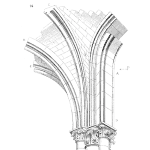
Attributes of Reliability Requirements
Abstract
Carl and Fred discussing the attributes of good reliability requirements, and how they can be used to improve the reliability requirements setting process.
Key Points
Join Carl and Fred as they discuss the nature of reliability requirements, and how to assess their goodness.
Topics include:
- What makes for good reliability requirements?
- What are the elements of the definition of reliability?
- Pitfalls to allocating reliability
- 10 quality attributes for reliability requirements (listed in Show Notes)
- How the 10 attributes can be used to assess the goodness of reliability requirements
Enjoy an episode of Speaking of Reliability. Where you can join friends as they discuss reliability topics. Join us as we discuss topics ranging from design for reliability techniques to field data analysis approaches.

Show Notes
Attributes of Good Reliability Requirements
- MEASURABLE
Reliability requirements are stated as probability statements measurable by test or analysis during the product development timeframe. They are not goals or non-measurable allocated numbers.
- BENCHMARKING
Reliability requirements are benchmarked against target competition, when possible, so that requirements execution exceeds “Best in Class.”
- PRODUCT REQUIREMENTS
Functional product requirements are well defined so that the measurable reliability requirements relate to their “intended function”.
- TIME
A clear statement of time (such as hours, cycles, miles, etc.) must be specified as part of the reliability requirements.
- CUSTOMER USAGE & OPERATING ENVIRONMENT
The combined customer usage and operating environment profiles are adequately defined in product requirements, and the corresponding tests duplicate actual field failure modes.
- DEGRADATION
The allowable degradation over time is defined in the requirements and represented by tests.
- FAILURE DEFINITION
The requirements include a clear definition of product failure, and this definition is incorporated into tests. It is preferred that components or subsystems are tested to failure as part of Reliability demonstration.
- BALANCE
All reliability requirements are balanced with other vehicle & subsystem performance objectives, and are agreed to by project management.
- ASSUMPTIONS
Assumptions about test-to-field correlation or failure distributions are valid.
- TECHNICAL SPECIFICATIONS
Reliability Requirements are incorporated into technical specifications and thereby into subsystem & component validation plans.
 Ask a question or send along a comment.
Please login to view and use the contact form.
Ask a question or send along a comment.
Please login to view and use the contact form.
Leave a Reply